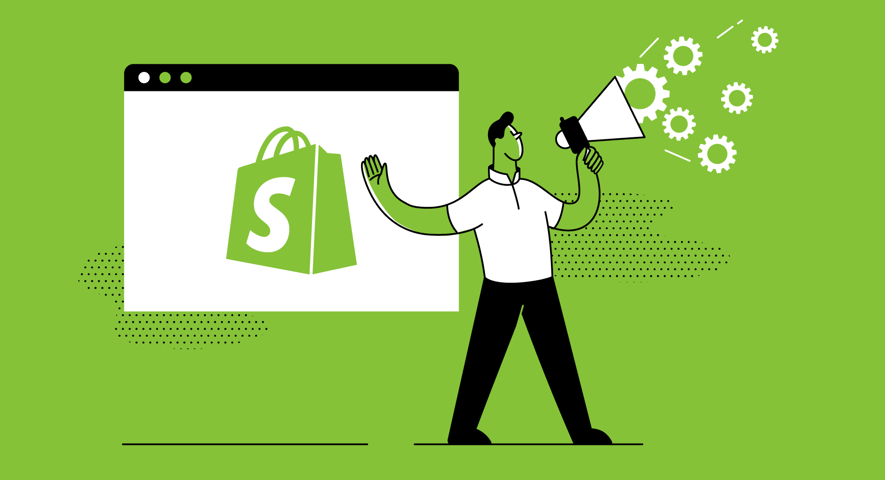Shopify — The Key Pros and Cons

Best App Development Company In Junagadh
25th January 2022
J.A.R.V.I.S.(Just A Rather Very Intelligent System)
28th January 2022There is a huge number of online store building tools now available, and choosing the right one for your business can feel really difficult. Shopify is probably the best-known e-commerce solution currently available — but is it actually the best fit for you?
Let’s dive in — with an important question. What is Shopify?
What is Shopify?
Shopify is a web application that allows you to create your own online store. It provides you with a wide range of ‘themes’ that can be customized to meet your own branding requirements and allows you to sell either physical or digital products.
A key idea behind Shopify is to let beginners build an online store themselves — you don’t need to know how to code to use it.
However, the platform also caters for developers, as it provides full access to CSS, HTML and Liquid (Shopify’s template language).
How does Shopify work?
Shopify is a ‘hosted’ solution. This means that it runs on its own servers and you don’t have to buy web hosting or install software anywhere to use it.
You don’t own a copy of the product, but instead, pay a monthly fee to use it — and, so long as you have access to a web browser and the internet, you can manage your store from anywhere.
With Shopify, the key things you need to build and market an online store — like templates, a payment processor, a blog and even email marketing tools — are provided ‘out of the box.’
That said, you can customize your store more extensively through the addition of apps — more on these later — or using custom code.
Shopify key features :
1) Shopify’s theme store
Shopify offers both free and paid themes with the options of creating your own with code or hiring a Shopify Expert to customize one for you.
The online store editor lets you customize the overall look of your store, and you can test different layouts by rearranging, adding, or removing sections of your theme
2) Add and manage products
Adding and managing your products is a straightforward task with Shopify. You can easily add in your product details such as: the title, description, image, price, and you can add product videos in the Media section.
When it comes to managing your products, the built-in stock-keeping unit (SKU), and inventory tracking features are really useful. These features help ensure that you’ve got a handle on your inventory and that you don’t sell items that are out of stock.
3) Collection
Shopify lets you organize your products into collections, this ultimately allows you to target a specific audience.
This means that you can:
- Display products under a specific product category such as accessories
- Or you could display products specifically for say, children or pets
4) Analytics and reporting
Shopify offers an overview dashboard and some useful reports, but the quality of reporting that you get is limited depending on your plan.
5) Shopify email
Email marketing is vital to growing any online business — it’s crucial for building relationships with your customers and generating sales.
Shopify Email lets you send up to 2,500 emails a month for free, with a $1 fee for every 1,000 emails sent after that.
5) Blogging and SEO
With a blog, you can provide your audience with insight into your brand or products.
The biggest advantage of having a blog is that it draws traffic to your website, for example:
- Blog posts can improve your store’s SEO — your ranking on Google searches
- The conversational tone that accompanies a good blog can convert visitors into customers
- Blogs increase customer engagement
Shopify Pros :
- They offer a variety of plans
- Over 100 payment options including their own built-in payment system (Shopify Payments)
- You can sell offline with their POS system
- Their interface is easy to use
- The themes are compatible with all devices
- The large array of third-party apps lets you improve your site’s functionality
- The customization potential is huge
- It’s easy to add and manage your products, and the collections are helpful
- Abandoned cart recovery is available on all plans — including the Lite plan
- You can send email campaigns and host a list of up to 2,500 subscribers for free
- The built-in email, blogging, and SEO tools will prove sufficient for most users
Shopify Cons :
- It’s costly for what’s on offer
- Extra transaction fees are unavoidable unless you use Shopify Payments
- The best features are only included in the more expensive plans (professional reporting and calculated third-party shipping rates)
- No drag-and-drop editor
- Installing an app is often necessary for core functionality — this can easily add to your monthly costs
- You can create 100 variants of a product — but there’s a limit of 3 product options
- Shopify Email is pretty basic, and email automation is only available if you’re on the $29+ plans
- The built-in blogging tool lacks some useful features
- Shopify adding URL strings that can’t be changed is not ideal for SEO





